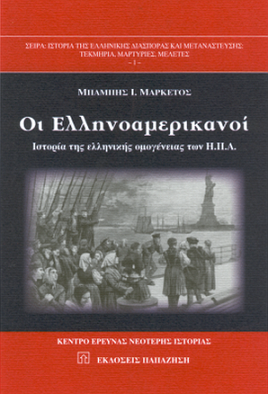The war in Syria, Interview with Tufts expert & Saint Andrew's Freedom Forum Advisory Council member Professor Elizabeth Prodromou
The conflict, already a humanitarian disaster, has turned into an international conflagration affecting the wider world, says Tufts expert and Saint Andrew’s Freedom Forum Advisory Council member Professor Elizabeth Prodromou. Taylor McNeilThe war in Syria began in March 2011 with peaceful protests against the regime of Bashar al-Assad, but soon became bloody. Now the country faces a growing conflagration, with a massive humanitarian crisis that is affecting not just the region but Europe as well. More than half the country’s population needs humanitarian assistance, and some 4 million more are internally displaced, half of them children.
The conflict is increasingly international, with Iran, Russia and Lebanon’s Hezbollah fighting to prop up the al-Assad regime, while the opposition is backed by Turkey, the United States, Saudi Arabia and Qatar. ISIS and the al-Qaeda-affiliated al-Nusra Front are also fighting against al-Assad. “The relatively rapid internationalization of the Syrian conflict over the past three to six months is worsening the war,” says Elizabeth Prodromou, J81, F83, a visiting associate professor of conflict resolution at the Fletcher School. Prodromou, who is teaching a class on democratization in the Middle East and another on religion and conflict this semester, says that a negotiated end to the conflict is essential. “Diplomacy is absolutely central to any sustainable, durable solution for the Syrian crisis,” she says. She spoke recently to Tufts Now about the origins of the conflict, its religious dimensions and what it will take to end the war. Tufts Now: How did the conflict in Syria, which started out locally, escalate into a regional conflict? Elizabeth Prodromou: The Syria conflict in some ways was already part of a broader regional conflict-the continuation of the Iraq war and the ongoing instability there. The collapse of the Iraqi state in the immediate post-Saddam period generated massive numbers of refugees, and the initial three recipient countries for Iraqi refugees were Jordan, Syria and Turkey. The absorption of large numbers of Iraqi refugees in Syria generated economic and social strains inside of Syria, and laid bare already existing tensions between the al-Assad regime and society. “Europe and the transatlantic alliance have come to accept that there is certainly not an exclusively military solution to the Syrian problem-and there is still little consensus about what sort of military solution is optimal,” says Elizabeth Prodromou.The recalibration and reconfiguration of the Sunni-Shia balance of power in post-Saddam Iraq was part of a broader reconfiguration of Sunni-Shia competition in the greater Middle East. The Syrian conflict developed within that context and, likewise, as part of the so-called Arab Spring transitional movements that started in Tunisia and spread to Egypt and beyond. When anti-Assad protests began in Syria in early 2011 and the regime responded with a brutal crackdown, responses to those events from regional actors were based on calculations about the Sunni-Shiite power balance in the region and the ongoing instability in Iraq. When did this regional conflict become an international one? The internationalization of the conflict has been gradual, but there has been a very remarkable escalation and expansion in the internationalization of the Syrian conflict in the past six months in particular. Some might argue that the internationalization of the conflict began as soon as foreign fighters from as far afield as Europe and North Africa and the Caucasus began flooding through Turkey into the Syrian theatre. Others might argue that the tipping point for the internationalization of the conflict came with the start of U.S.-led coalition air strikes in response to the defining role of the Islamic State (ISIS) in the Syrian conflict. These are important developments. But it’s worth pointing out that the past six months have witnessed yet another significant phase in the internationalization of the war in Syria, with the real uptick in Iran’s involvement through the presence of Iranian Revolutionary Guard Corps forces in Syria, and with the start of Russia’s air strikes against ISIS and anti-Assad positions in Syria, combined with advisors and intelligence support on the ground. The other international development regarding the Syrian situation has come in the form of Europe’s awakening-I would say quite belated awakening-to the massive refugee and IDP [internally displaced persons] flows generated by the war. The humanitarian calamity that is the Syrian war, which has already produced massive refugee flows to Turkey, Jordan and Lebanon, is now being recognized by the EU because of the massive refugee flows into Europe. There are also growing, complicated NATO dimensions to the war in Syria, not only because of the participation of some NATO members in the coalition air strikes against ISIS, but also because of the clearly ambiguous role played by Turkey, a NATO member, relating to the Syrian opposition and to ISIS. To what extent do sectarian issues play in this conflict? Because of the central role of ISIS, many people say the Syrian conflict is about religion, about Sunni-Shia sectarianism and about secular-religious conflicts. Although it would be impossible to understand the conflict in Syria without taking religion into account, it would be a mistake to reduce the conflict in its origins to a sectarian struggle. In fact, I would argue that in its initial stages it was not about religion-it was about the cumulative effects of an autocratic regime, which happened to be Alawite, and the unwillingness of the broader population, primarily Sunni, to endure the privations imposed by the regime. The initial drivers of the conflict lay in the reaction against an oppressive dictatorial regime. That’s not to say there were not religious dimensions to the initial stages of the conflict. But it’s the broader regional dynamics that I mentioned earlier, as well as the consolidation of ISIS as a critical actor in the conflict, that have transformed and amplified the sectarian dimensions of the Syrian war along Sunni-Alawite lines, and have put non-Sunni and non-Alawite minorities, including the significant Christian and Druze minorities, in the line of fire. The Arab-Kurdish cleavage, exacerbated by Turkey’s role in the conflict, has also amplified the ethnic as well as the sectarian dimensions of the conflict. Put simply, we’ve seen a conflict that was not about religion in its early stages devolve into a war with unmistakable religious and ethnic dimensions. What can be done to alleviate the humanitarian crisis in Syria? The international community has to step up to respond more consistently and intentionally to the humanitarian calamity caused by the war in Syria. The U.S. and the European Union could take the lead, lending both material support and the moral authority necessary for a more effective global response. The refugee and IDP issues in Syria represent a colossal humanitarian catastrophe. They are mind-numbing in terms of the metrics of human suffering on the ground in Syria. It’s critical to think about how to address these questions expeditiously and efficiently; the human consequences in terms of loss and disruption of life, as well as the intergenerational consequences of the humanitarian crisis for any post-conflict reality in Syria, are staggering. Furthermore, we are also seeing how refugee/IDP flows are creating massive economic and social destabilization in Jordan, Lebanon and Turkey, and beyond that into Europe-Greece and the other Mediterranean countries and into the Balkans. How bad is it? Most experts agree that a little more than 12.2 million people need humanitarian assistance in Syria, which is more than half the population. Think of that. There are now well over 4 million Syrian refugees in neighboring countries-primarily Turkey, Jordan and Lebanon. There are 7.6 million internally displaced persons in Syria-the numbers are just staggering-and 50 percent of those are children. We are talking about the implosion of Syria’s social fabric and institutions, with the whole panoply of livelihoods, shelter, public health, psychological trauma and medium- and long-term economic ripple effects that such a collapse engenders. And again, the effects extend well beyond the borders of Syria into neighboring countries, such as Jordan, Lebanon and Turkey. What can Europe do to help, as it finds itself flooded with Syrian refugees? Europe and the transatlantic alliance have come to accept that there is certainly not an exclusively military solution to the Syrian problem-and there is still little consensus about what sort of military solution is optimal. Any military response-and we are likely to see significant adjustments in the military response of the Western alliance in the aftermath of the ISIS attacks in Paris on Nov. 13-will require sophistication and coordination. To maximize the chances of success, a military response will also involve some degree of coordination between the transatlantic alliance and Russia and Iran. But in the meantime Europe is already working to try to develop more effective practices for receiving, processing, protecting and settling migrants. Again, in the aftermath of the ISIS assault on Paris, especially given the revelation that two of the suicide bombers were among the inflows of Syrian refugees, Europe’s response to the migrant crisis may become rapidly securitized. This could have negative consequences at a variety of levels, so European leaders will need to exercise extreme prudence in parsing the legitimate security aspects of the migration crisis from the obvious and unrelenting humanitarian aspects of the refugee flows. What would it take to stop the war? A cessation in hostilities will take a mammoth effort involving combined military, diplomatic, humanitarian and economic strategies for dealing with the Syria crisis. In fact, in the immediate aftermath of the Paris attack-and, some would argue, because of the shock created by that assault-global powers meeting in Vienna came to agreement on Nov. 14 about the main parameters of a roadmap for halting the war in Syria. Most importantly, the twin pillars of a successful effort to stop the war involve the unification of military forces, or more precisely, coordination of military actions in the Syrian theatre, and the implementation of a transition plan for political change in Syria. It remains to be seen whether the key actors in Vienna, namely the U.S., Russia, Iran, Saudi Arabia and the European states and Turkey, will be able to implement the broad outlines of the agreement reached in Vienna. Success will require an enormous amount of political will and leadership on all fronts. Are there parallels between the civil war in Lebanon 1975-1990 and Syria today? In Lebanon, the warring factions in the end realized no one was going to win, and negotiated an end to the war. Do you see that happening in Syria? That notion of war fatigue is something that people have been talking about. Though I think there are some parallels to the Lebanese situation, I think Syria’s size, its geopolitical importance and the spillover effects make the Syrian case very different from the Lebanese case. Slowly, and perhaps catalyzed by the attacks in Paris, the international community is realizing that the notion of standing back and waiting for war fatigue to set in is not an option. What does Russia get out of escalating the conflict? That’s really the $64,000 question. Russia has long been a supporter of the al-Assad regime, and Moscow has claimed that it was a pipe dream to try to train, equip and support a moderate opposition to the al-Assad regime. There is also a knee-jerk, anti-U.S. reaction inherent in Russia’s response to the Syrian conflict, especially given the sharp deterioration in Russia’s relations with the transatlantic alliance since the start of the conflict in Ukraine-in other words, whatever position the U.S. takes, Russia will do the opposite. And from the geopolitical perspective, Russia’s involvement in Syria is also related to Moscow’s goal of maintaining permanent access to the deep water port of Tartus in Syria, helping to consolidate Russia’s presence in the Mediterranean. Does the presence of non-state actors, like ISIS and other groups, make it more difficult to think about a negotiated settlement? Yes, absolutely. We’re talking about states brokering deals, but in the final analysis, one of the primary parties to the conflict, ISIS, is a non-state actor, at least in the way we traditionally understand states. In that regard, a negotiated, durable settlement to the war in Syria involves actors and dynamics that no longer conform to the traditional world of states that has been with us since Westphalia in the 17th century. This is a whole new world. Taylor McNeil can be reached at taylor.mcneil@tufts.edu. |











Σχόλια Facebook